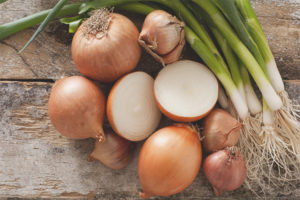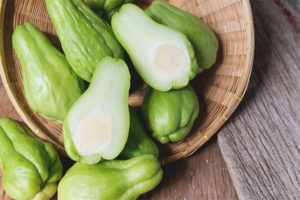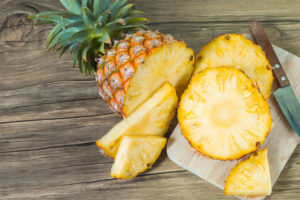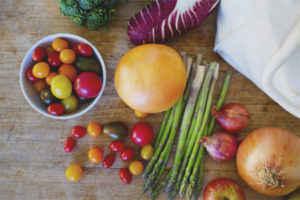The content of the article
Melons begin to ripen in the middle of summer. The main crop falls on August - September. Those melons that are on the shelves in early July are still green, not ripened. It is difficult to expect a rich natural taste from them. Actual timing should be considered first. Even the most early ripening varieties, to which Cantaloupe belongs, should not be expected before mid-July. And then you need to pay attention to several important signs of ripeness.
Plant characteristics, ripening dates
Melon botanically belongs to the pumpkin family, the genus of cucumber. This explains her climatic preferences. Best of all, it grows and bears fruit abundantly in warm countries without excess moisture with lots of sunny days. The optimal regions for cultivation are considered the Mediterranean, Krasnodar Territory, Asia. The earliest and most delicious melons are brought for sale from Kazakhstan, Uzbekistan, and the Volga region. It is not worth giving in to the temptation and purchasing exported goods. 2-3 weeks after harvesting from the field, they begin to lose taste and aroma; they are maintained by the use of various stabilizers, which will not benefit the body. It’s easier to wait until domestic melons are ripe. The list of the sweetest varieties included:
- Torpedo;
- Collective farmer;
- Ethiopia
- Honey
- Golden
They are united by juicy flesh, bright aroma with notes of honey or fruit, rich composition, short shelf life.
Beneficial features
Melon is considered a dietary product, it is very useful fresh, in season it is recommended to include it in the diet. It has a large supply of vitamins, including A, C, D, E, K, B and minerals. It has an anti-stress effect, it can raise the mood, improve digestion and remove excess water from the body. Melon quenches thirst well, reduces the risk of heart attack, atherosclerosis, and cardiovascular diseases. It increases concentration, improves memory, relieves anxiety and irritation, strengthens the immune system, and eliminates signs of vitamin deficiency.
Limitations
Keep in mind: very young children are not recommended to give melon. It causes flatulence, allergic reactions, weakens.
In weight loss and control programs, the use of the fetus is permitted only in fresh form. The calorie level of dried pieces increases to 370 kcal per 100 g. product.
Melon Selection Rules
When buying, you should take into account seasonality, variety, appearance, level of aroma, condition of the fruit tail. Together, these signs will tell you whether to buy this particular instance.
Seasonality
The main part of melons is in the end of August. Mid-season varieties yield in September; later varieties can last almost to the first frosts. The earliest species is Cantaloupe; Ethiopka is the later.
Grade
Much depends on him. Some species are not sweet, the pulp is dense, crunchy. Such varieties are more suitable for mixed salads, candied fruits. Soft, juice-dripping varieties are sweeter, they have their own signs of ripeness.
- The torpedo has an elongated shape, the color of the skin is white-yellow with a net. Record champions by weight reach a mark of 15 kg, but experts do not advise buying such giants. Fruits of average size, up to 7 kg, are much richer in taste and aromatic. The deadline is no earlier than the 20th of August. A frequent mesh indicates a high level of sweetness.If green streaks or stripes are observed, then it is not worth buying, they plucked the ripened one. The aroma should be strong, stable with a slight shade of pear.
- The collective farmer is small in size, it is good to buy it, as a portioned treat. The skin is yellow with a grayish mesh, embossed to the touch. On sale since mid-August. The smell is saturated, pulp of medium density. Preference should also be given to medium-sized fruits, they spit faster and more evenly.
- Ethiopia appears on the market last and leaves the shelves at the very end of September, capturing the first days of October in warm autumn. The peel of the ripe melon is greenish, the surface is divided into distinct segments, like a gray pumpkin. In a ripened specimen, it gives off a pineapple hue.
- Honey rarely gets on the shelves, it is capricious in agricultural technology, does not tolerate transportation very well. It is better for her to feast on the places of cultivation. These are the Mediterranean and Asian countries. The melon is small in size, sunny-golden with an almost monophonic mesh. The pulp is tender, very juicy, with a honey flavor, sweet.
- Golden refers to mid-early varieties, which means it appears on sale by mid-August. The color of a ripe fruit is uniformly yellow, without green stripes and spots. The pulp is white, aromatic. Choose a ripe fruit by a dull sound when slapping, dried tail, strong aroma.
- The remaining signs of ripeness can be attributed to any variety. Upon examination, the melon should not have cracks, spots, depressed areas, protruding juice. Sweet and ripe will be the fruits of medium size. The aroma should spread in a few steps, be saturated, sweet without an admixture of acid or mustiness. It is worth paying attention to the condition of the tail. About full ripeness speaks completely dry, plump process.
Signs of low-quality melon
Important: You cannot cut a melon for testing. It is enough to focus on external signs.
If time approaches mid-August, the melon beckons with a rich aroma, bees or wasps curl around the place of trade, the fruits look attractive and have no damage, that is, there is every chance of an amazing dessert.
Video: how to choose a melon, ripe sweet and without nitrates











Submit